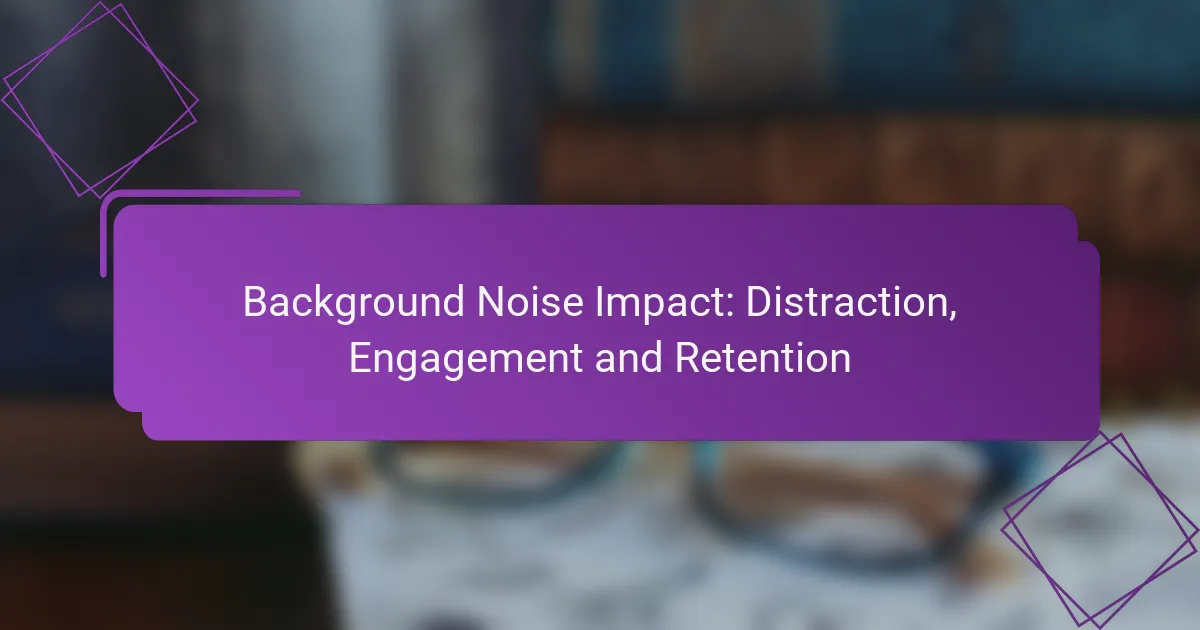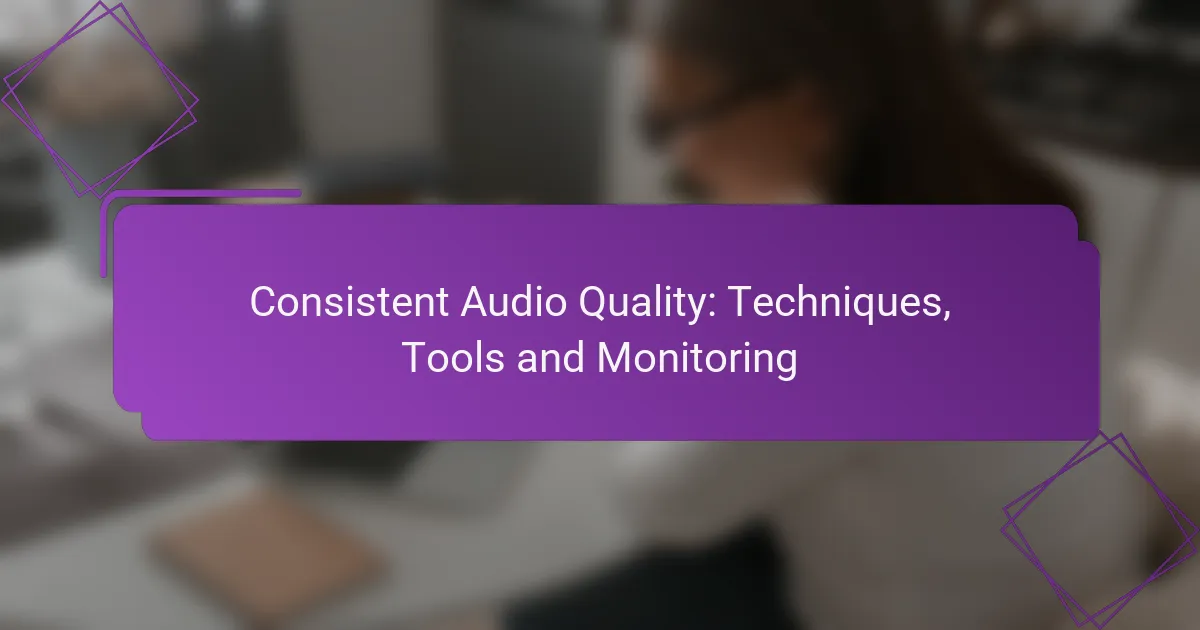Background noise plays a crucial role in influencing focus and productivity in various environments, particularly in workplaces and educational settings. Its presence can lead to increased distractions, ultimately hindering engagement and retention of information. By understanding the effects of background noise, effective strategies can be implemented to create more conducive environments for concentration and learning.
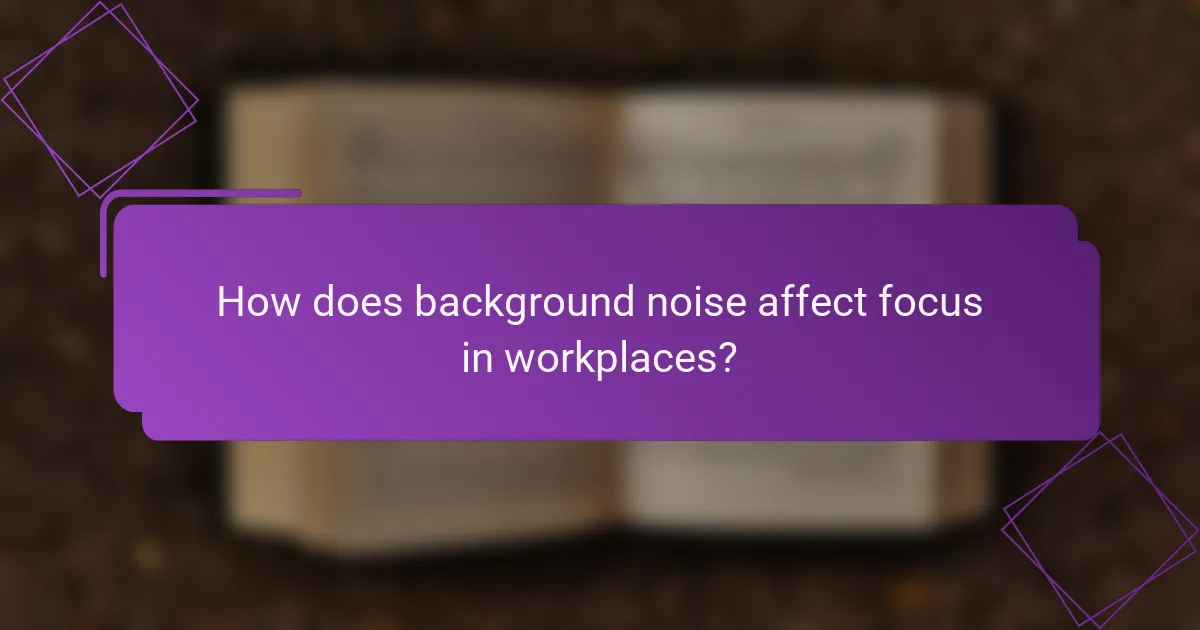
How does background noise affect focus in workplaces?
Background noise significantly impacts focus in workplaces by increasing distractions and reducing overall engagement. Employees exposed to persistent noise may find it challenging to concentrate, leading to lower retention of information and decreased work quality.
Increased distraction levels
Background noise can elevate distraction levels, making it difficult for employees to maintain their attention on tasks. Common sources of noise, such as conversations, machinery, or traffic, can interrupt thought processes and lead to frequent shifts in focus.
To mitigate distractions, consider implementing noise-reducing strategies like soundproofing, providing quiet zones, or encouraging the use of noise-canceling headphones. These measures can help create a more conducive work environment.
Reduced productivity
As distractions increase, productivity often declines. Employees may take longer to complete tasks due to interruptions, resulting in missed deadlines and lower output quality. Studies suggest that even moderate background noise can lead to a noticeable drop in efficiency.
Employers should assess the noise levels in their workplaces and consider adjustments, such as rearranging workspaces or using white noise machines, to foster a more productive atmosphere. Regular feedback from staff can also help identify problem areas.
Impact on mental fatigue
Continuous exposure to background noise can contribute to mental fatigue, which affects cognitive function and decision-making abilities. Employees may experience increased stress levels and burnout, leading to higher turnover rates.
To combat mental fatigue, organizations should promote breaks and encourage a quieter work environment. Providing resources for stress management, such as mindfulness programs or relaxation spaces, can also help maintain employee well-being and focus.
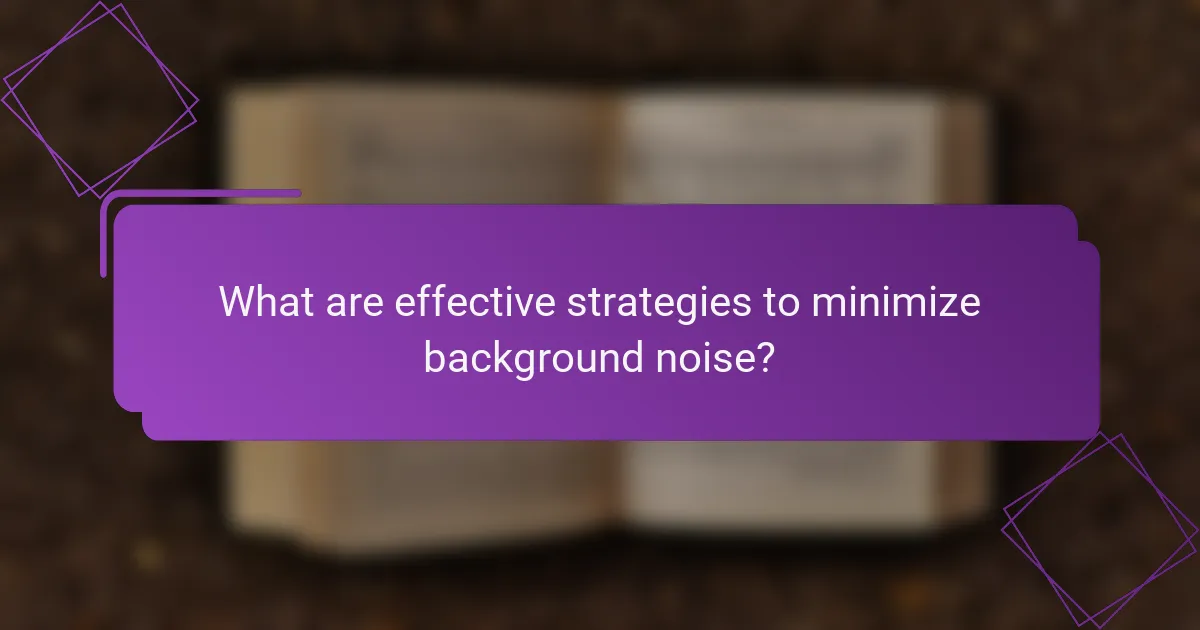
What are effective strategies to minimize background noise?
Effective strategies to minimize background noise include using noise-canceling headphones, implementing sound masking systems, and creating designated quiet zones. These methods can significantly enhance focus and productivity by reducing distractions in various environments.
Use of noise-canceling headphones
Noise-canceling headphones work by using microphones to detect ambient sounds and then generating sound waves that counteract them. This technology can be particularly beneficial in open office spaces or crowded environments, where distractions are prevalent.
When selecting noise-canceling headphones, consider factors such as battery life, comfort, and sound quality. Many models offer varying levels of noise cancellation, so choose one that suits your specific needs, whether for work or leisure.
Implementing sound masking systems
Sound masking systems introduce background noise, such as white noise, to mask distracting sounds. This technique can be effective in offices, healthcare settings, and educational institutions, where maintaining concentration is essential.
When implementing sound masking, ensure that the volume is set at a level that is unobtrusive yet effective. A common range is between 45-55 decibels, which should blend into the background without being disruptive.
Creating quiet zones
Designating quiet zones in workplaces or public areas can provide individuals with a space to focus without interruptions. These areas should be clearly marked and equipped with comfortable seating to encourage use.
To enhance the effectiveness of quiet zones, consider soundproofing materials and layout design to minimize noise from adjacent spaces. Regularly assess the usage and effectiveness of these zones to make necessary adjustments for optimal results.

How does background noise influence learning retention?
Background noise significantly impacts learning retention by creating distractions that hinder memory consolidation. When learners are exposed to noise, their ability to recall information diminishes, leading to lower engagement and retention rates.
Negative effects on memory recall
Background noise can disrupt cognitive processes essential for memory recall. Studies indicate that environments with high levels of noise can lead to a decrease in the ability to remember information, often resulting in lower test scores and comprehension levels.
For instance, learners studying in a noisy café may find it challenging to retrieve facts or concepts during assessments compared to those in quieter settings. This distraction can lead to frustration and decreased motivation to engage with the material.
Variability in information absorption
The presence of background noise can create variability in how effectively individuals absorb information. Some learners may adapt better to noisy environments, while others may struggle significantly, leading to inconsistent learning outcomes.
For example, while some students might thrive in a bustling classroom, others may require silence to focus and retain information. This variability highlights the importance of creating tailored learning environments that consider individual preferences and needs.

What types of background noise enhance engagement?
Background noise can significantly enhance engagement by creating an optimal auditory environment. Sounds like white noise and natural sounds can help improve focus and retention by masking distractions and promoting a sense of calm.
White noise benefits
White noise is a consistent sound that can drown out disruptive noises, making it easier to concentrate. It works by providing a steady auditory backdrop that minimizes sudden changes in sound, which can be distracting. Many people find that using white noise can lead to increased productivity and better retention of information.
When considering white noise, options include sound machines, smartphone apps, or even simple recordings. The volume should be set at a moderate level, typically around 50-70 decibels, to ensure it is effective without being overwhelming.
Natural sounds for concentration
Natural sounds, such as rain, ocean waves, or forest ambiance, can enhance concentration and create a soothing atmosphere. These sounds often evoke a sense of tranquility, which can help reduce stress and improve focus. Research suggests that these types of sounds can lead to better cognitive performance and information retention.
To incorporate natural sounds into your environment, consider using apps or playlists specifically designed for concentration. Aim for sounds that are gentle and rhythmic, as they are less likely to disrupt your thought process. Experiment with different types of natural sounds to find what works best for you, as personal preference plays a significant role in their effectiveness.
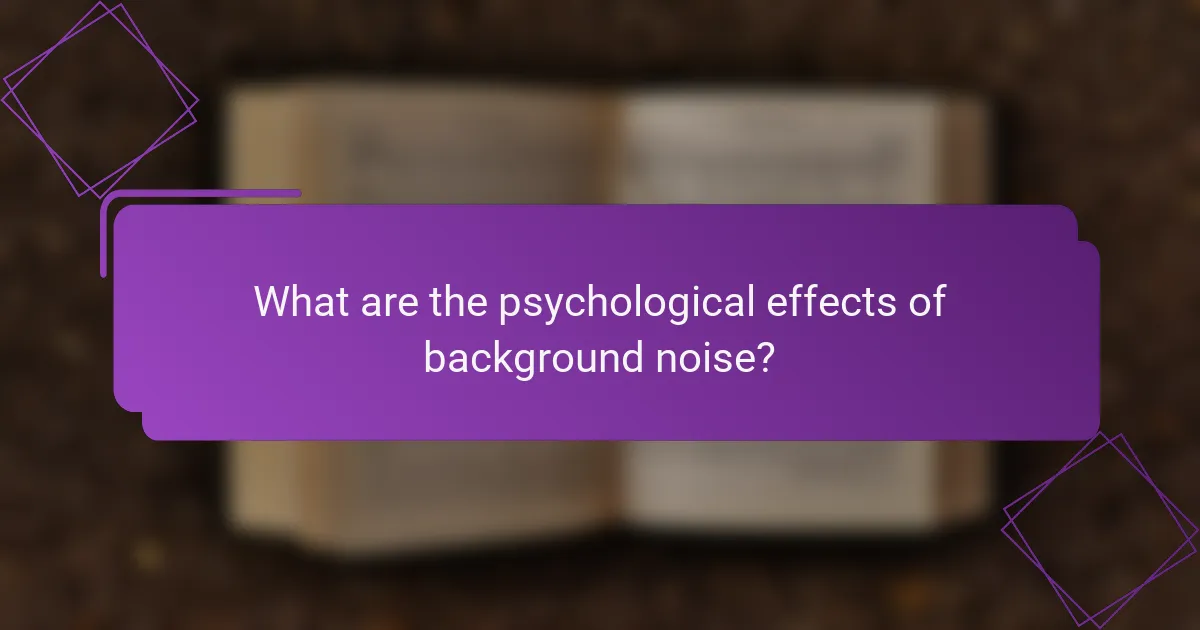
What are the psychological effects of background noise?
Background noise can significantly influence psychological well-being, affecting concentration, stress levels, and overall engagement. Understanding these effects is crucial for creating environments that promote productivity and mental health.
Stress and anxiety levels
Exposure to background noise can elevate stress and anxiety levels, particularly in environments where concentration is essential. Studies suggest that constant or unpredictable noise can trigger the body’s stress response, leading to feelings of unease and distraction.
To mitigate stress, consider reducing background noise through soundproofing or using white noise machines. Creating a quieter workspace can help lower anxiety and improve focus, especially in high-pressure settings like offices or study areas.
Impact on mood and motivation
Background noise can also affect mood and motivation, with loud or jarring sounds often leading to irritability and decreased enthusiasm. Conversely, pleasant ambient sounds may enhance mood and foster a more positive atmosphere.
To maintain motivation, aim for a balanced auditory environment. Soft music or nature sounds can uplift spirits, while disruptive noises should be minimized. Regularly assess your surroundings and adjust sound levels to support a productive and motivating workspace.
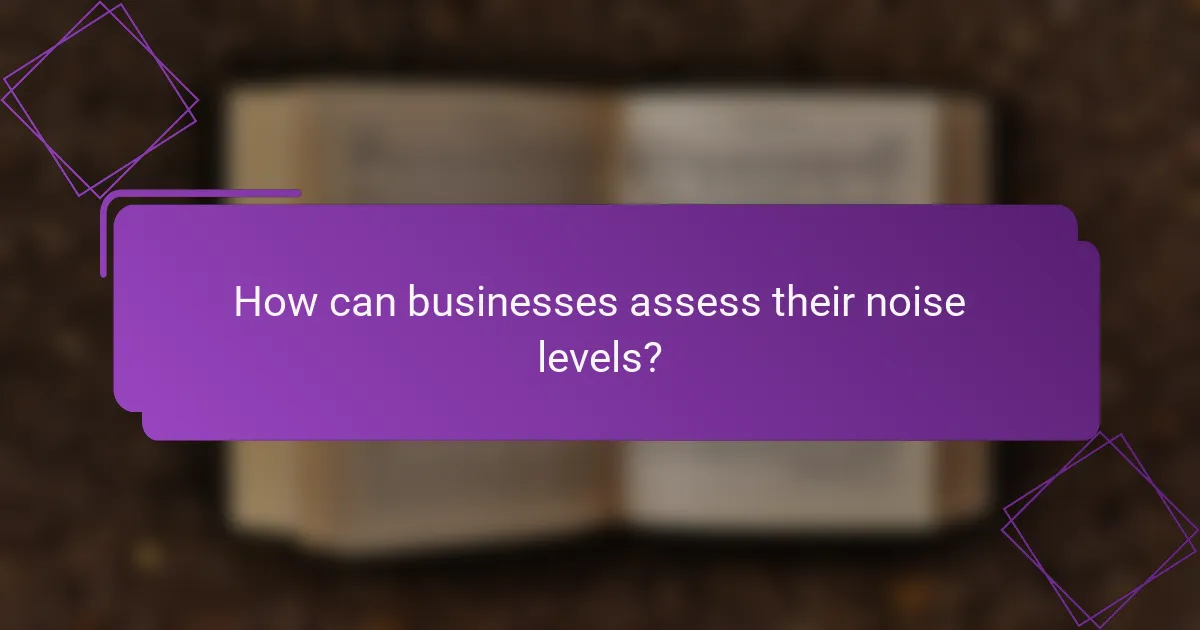
How can businesses assess their noise levels?
Businesses can assess their noise levels by conducting thorough evaluations of their acoustic environment. This involves measuring sound intensity, identifying sources of noise, and understanding how these factors affect employee concentration and productivity.
Conducting acoustic assessments
Acoustic assessments involve measuring sound levels in various areas of a business to identify problematic noise sources. Utilizing sound level meters, businesses can capture data on decibel levels during different times of day to understand peak noise periods.
When conducting these assessments, consider both the frequency and duration of noise exposure. Continuous noise above 70 dB can lead to distractions, while intermittent sounds may disrupt focus even at lower levels. Regular assessments can help track changes over time and inform necessary adjustments.
It’s beneficial to involve employees in the assessment process by gathering their feedback on noise disturbances. This can provide valuable insights into how noise impacts engagement and retention, allowing businesses to prioritize areas for improvement.
